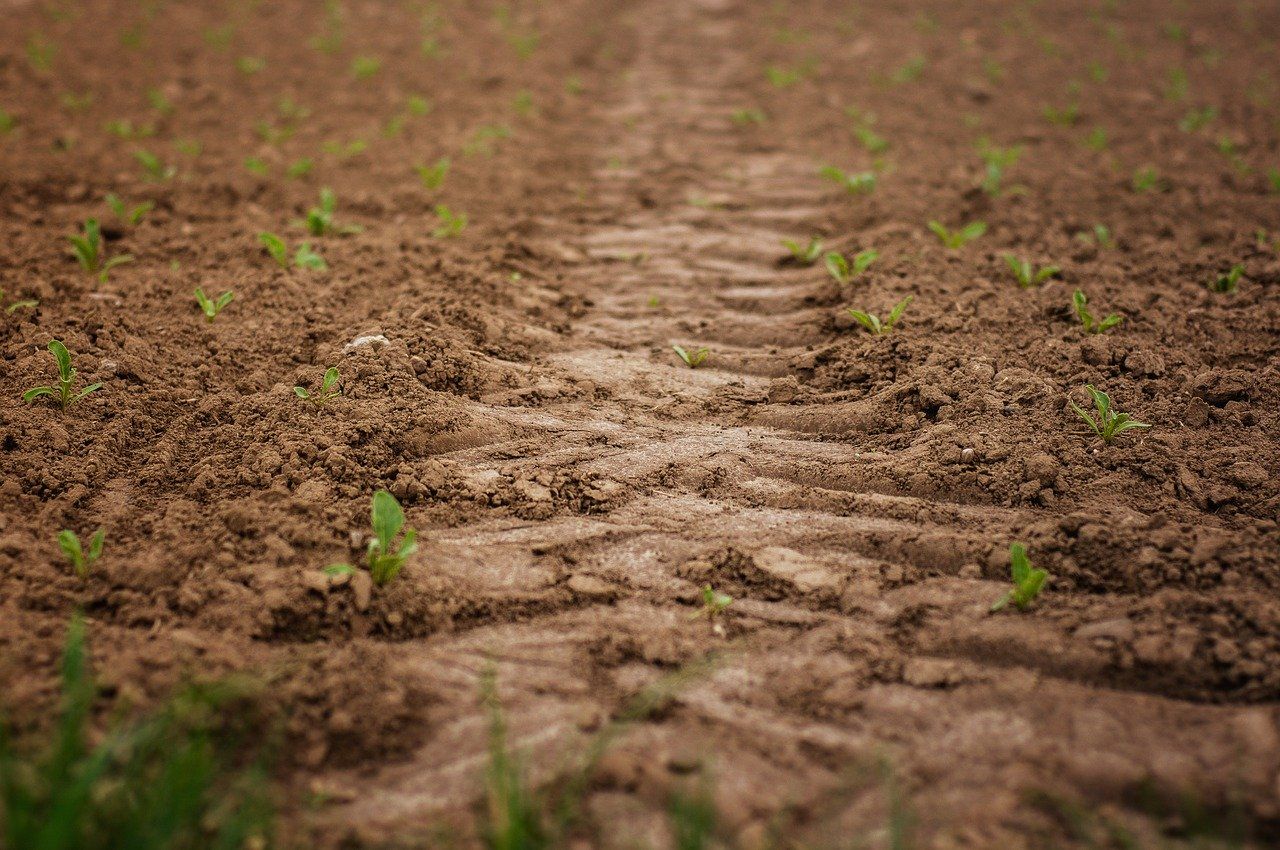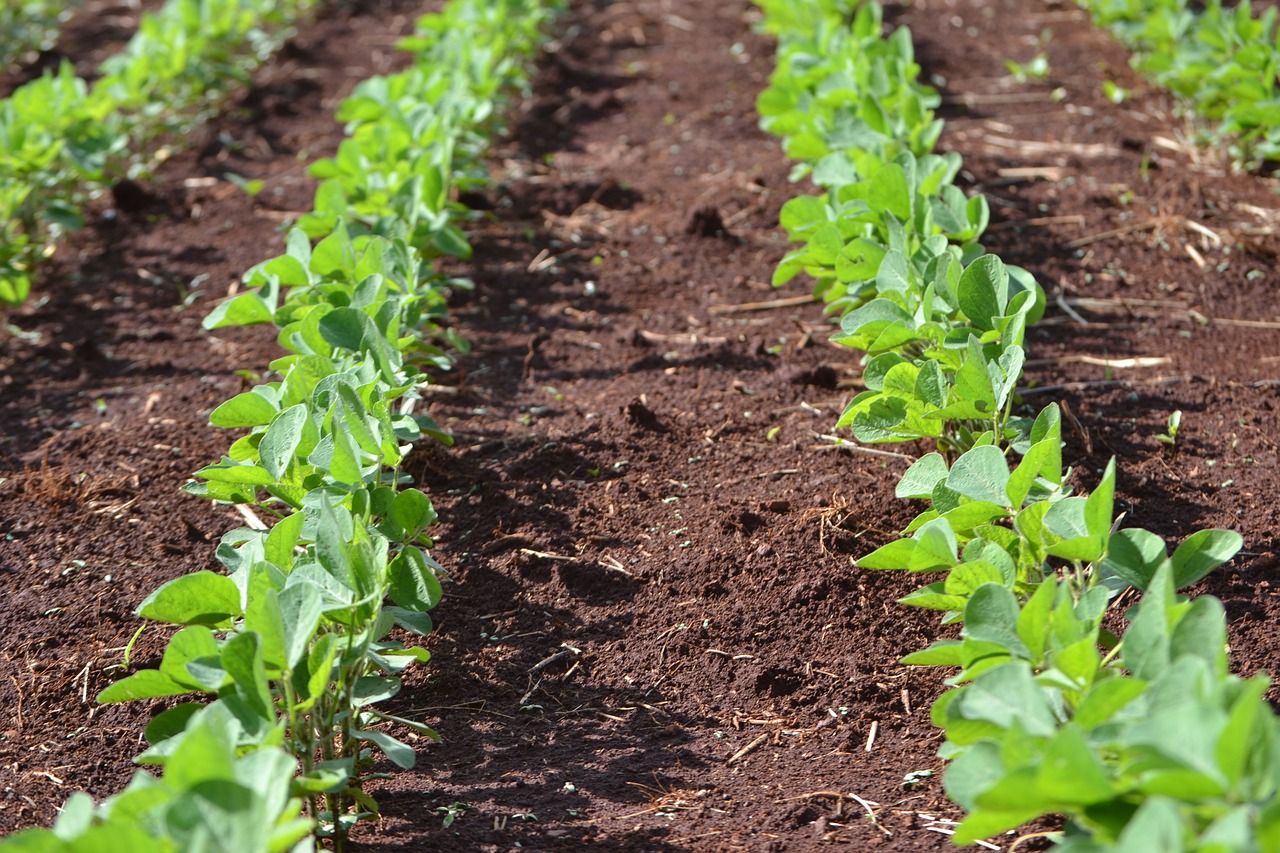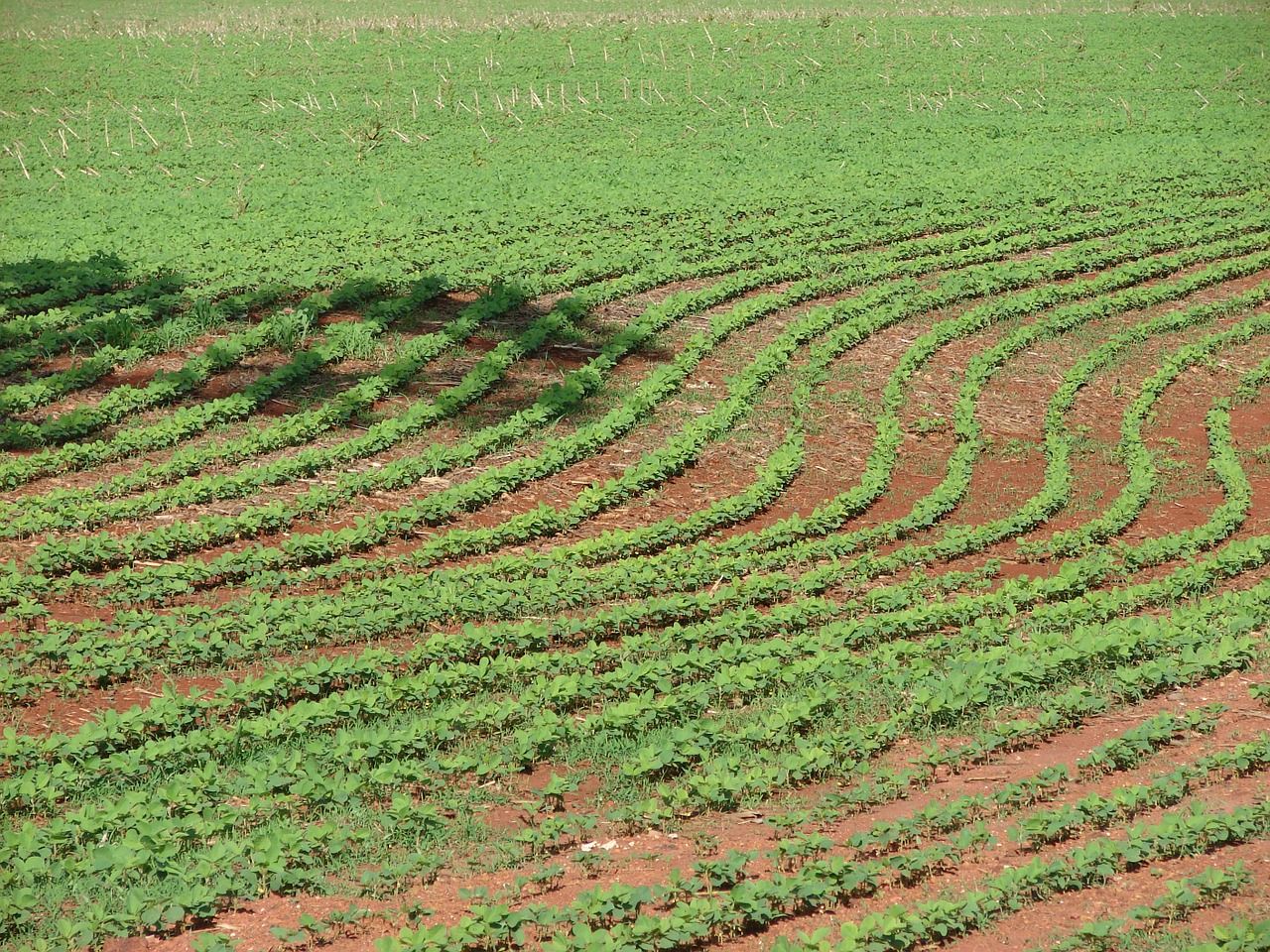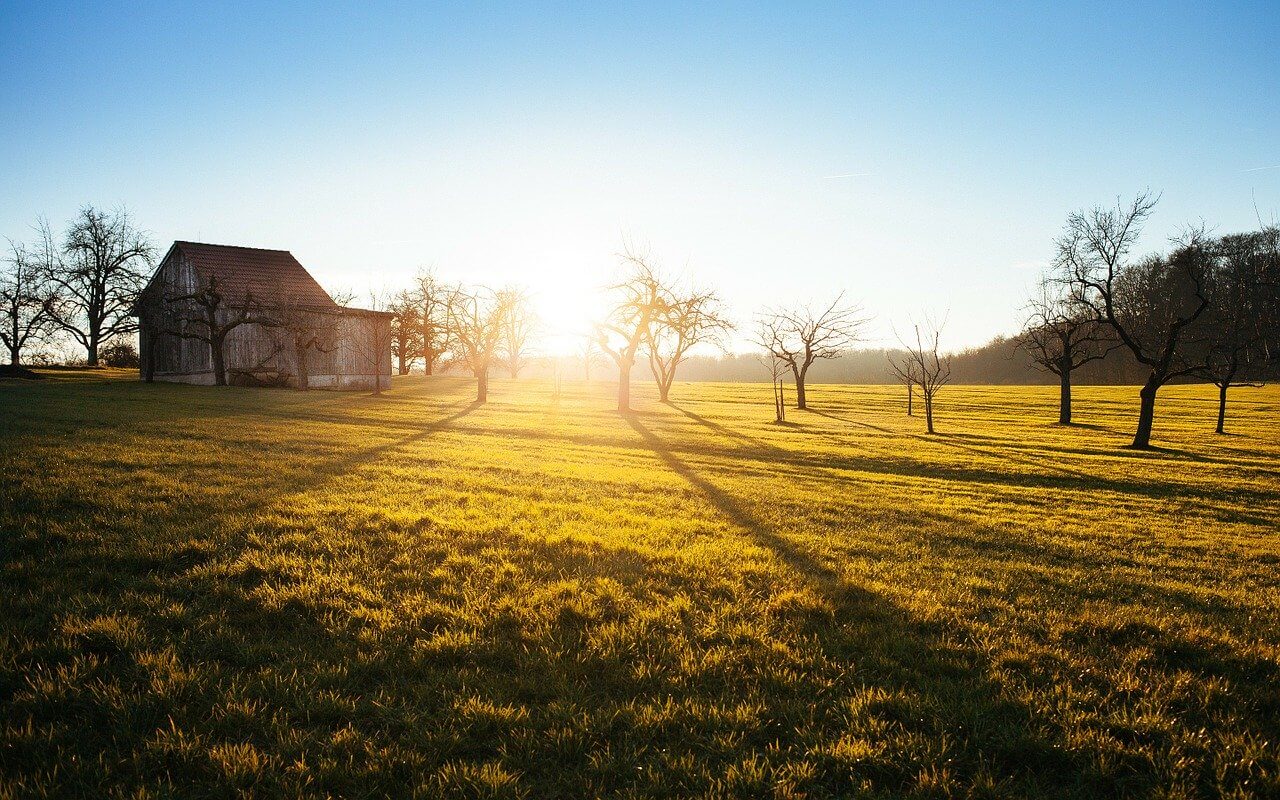Realizing what sort of soil you could have and what sort you want for the crops you bear in mind is among the very most necessary points of profitable farming. Realizing your soil sort will provide help to select crops that shall be profitable, and understanding the standard of your soil will inform you as to what you might want to do to amend and enhance it for fulfillment. On this article, we talk about probably the most appropriate sorts of soil for farming. Learn on to study extra on what sort of soil is greatest for farming.

Take a look at your soil your self, or name within the assist of your county agricultural extension to find out precisely what sort of soil you could have.
Usually talking, good rising soil ought to have well-balanced vitamins corresponding to magnesium, potassium and nitrates. Excesses of any nutrient or micronutrient can spell hassle.

It is a very fascinating sort of soil as a result of it’s gentle, ethereal and gives a very good rising substrate for all kinds of greens.
It gives very sharp drainage and is an efficient selection for root greens like carrots, turnips and parsnips. Herbs, corresponding to thyme, bush clover, creeping Juniper and Bayberry additionally do nicely in sandy soil. Fig and pomegranate timber thrive in sandy soil.
It is a mixture that makes probably the most of those two good sorts of soil. It gives good drainage and good diet for vegetable crops corresponding to tomatoes, leafy greens, beets and carrots.
Clay isn’t gentle and ethereal, and isn’t sometimes good for many vegetables and fruit. Even so, there are some sorts of crops that develop nicely in soil with a excessive share of clay.
Amongst them are cruciferous greens corresponding to broccoli and cabbage; some herbs corresponding to purple valerian and Yarrow, and a few timber corresponding to Black Walnut, maple, pear and cherry.
Silt is kind of fertile and gives plenty of good vitamins for greens corresponding to turnips, cabbage, carrots and lettuce. Fruit timber corresponding to pomegranate and citrus do nicely in silty soil, as do berries together with raspberries, strawberries and blackberries.
Chalky soil is kind of alkaline, and customarily must be amended to appropriate this imbalance. Even so, greens corresponding to cabbage, spinach, candy corn and beets can do nicely in soil with a excessive chalk content material.
It may be fairly helpful if natural matter corresponding to compost and lime are blended in to decrease its acidity stage. One of these soil can present a superb substrate for legumes, spinach, cabbage and in addition for root crops.

When you don’t have your soil examined, you’re flying blind. Several types of crops want totally different ranges of drainage and diet.
The pH stage of the soil is extraordinarily necessary in figuring out whether or not or not your crop will thrive or fail. Good testing tells you precisely what you could have and precisely what you want.
When you could have your soil examined, you’ll know the degrees of:
With this information, you possibly can determine what you wish to plant and what you might want to do to have the healthiest and most efficient crops.

As a result of crops are likely to deplete soil of vitamins, it’s a good suggestion to check the soil each couple of years. It’s additionally good to observe crop rotation to keep away from closely depleting your soil of the vitamins wanted to feed that crop yr after yr. Clever crop rotation offers the land a relaxation and enriches it.
Alternatively, you possibly can think about using the traditional three discipline system we’ve described right here.
Some sorts of insect infestation (e.g. grub worms) could be very detrimental within the soil. When you discover that there’s a whole lot of pest larvae in your soil, you’ll wish to add in helpful, predatory bugs and helpful micro organism to assist steadiness that out and eliminate the dangerous bugs in your soil.
You may additionally discover that there are small rocks in your soil, which underneath sure circumstances it’s a good suggestion to take away.
You may additionally discover that your soil is dangerous as a result of it’s missing in vitamins. As a substitute of amending it with harsh chemical substances, it’s a good suggestion so as to add natural compost, manure and different pure amendments. Plant a canopy crop that may be turned underneath as “inexperienced manure” when it has matured.
Right here is our information on the way you put together soil for natural farming.

Cowl crops are crops that enhance the soil by defending it in opposition to erosion, making it extra receptive to nourishment (e.g. legumes) and enriching the soil when they’re turned underneath on the finish of the season.
Planting a canopy crop suppresses weed progress and baffles pest bugs which will come again yr after yr when the identical crop is planted in the identical place each rising season.
These crops are sometimes plowed underneath as soon as they’ve matured, and so they naturally decompose to complement the soil.
Typical cowl crops embody:
After all, all of those crops is also harvested on the finish of the season. Alternately, they might be used as grazing for livestock.
Soybeans are particularly enticing to deer, so fields which were sown in soybeans for the aim of rejuvenating the soil are sometimes left open to draw deer to be “harvested” as a supply of meat.
Soil upkeep is important. The soil is actually the foundation of your farm. Whether it is improperly managed, you’ll lose your fertile topsoil to erosion.
Whether it is allowed to turn into depleted, you will be unable to provide wholesome crops. Listed below are some advantages and downsides of sub-soiling.
Understanding what sort of soil you could have and what you might want to do to take excellent care of it’s the foundation of fine farming. For extra on clearing your land, see our article on clearing land for farming.
Soil serves as the inspiration for myriad plant and animal life. Good soil helps biodiversity and serves as the first medium for agricultural cultivation. Certainly, we’d like good soil to supply the meals we depend on. Along with agricultural significance, soil contributes to the structural integrity of the earth’s floor. Good high quality soil is essential for all kinds of development endeavors.
Soil is a comparatively skinny layer, roughly one meter thick, protecting the floor of the Earth. It’s made up of a mix of weathered mineral and natural supplies, together with air and water. Mineral particles, particularly sand, silt, and clay, outline its composition and affect properties corresponding to water retention and nutrient absorption capability.
Soil formation is a course of involving the buildup of supplies from erosion, the breakdown of bedrock by means of weathering, and the deposition of sediments by pure forces like wind and water. In very chilly settings, ice additionally performs a pivotal position in preliminary soil improvement. That is adopted by bodily, chemical, and organic weathering processes.
Though there are lots of sorts of crops that may thrive with out soil, the crops we develop in our dwelling vegetable gardens and in agricultural settings want good soil to outlive and thrive. These crops flourish in good soil as a result of it gives them with important components. Properly amended soil additionally gives structural assist for crops’ root methods, very important vitamins like nitrogen, phosphorus, and potassium, and a community of interconnected areas that facilitate root entry to air and water, each essential for plant progress.
Several types of soil are “good” for various functions. Soil supposed for agricultural and backyard use may be very totally different than soil supposed for development functions. To find out whether or not your soil is nice to your supposed objective, you need to establish the qualities obligatory to your objective. Subsequent, consider your soil’s elements corresponding to bodily construction, water retention capability, chemical composition together with pH ranges and nutrient availability, and organic exercise. All of those qualities contribute to figuring out soil high quality.
Wholesome soil presents a secure ecosystem that helps important organic processes and demonstrates resilience in opposition to pests and ailments. Wholesome soil is ready to maintain a various neighborhood of organisms; thereby, enabling environment friendly nutrient recycling from natural matter decomposition. This course of creates pure, natural nourishment in varieties accessible to crops.
All over the world, soil situations differ enormously. There are mainly three attainable eventualities when it comes to soil well being:
Each state of affairs is totally different, so it is very important consider soil well being on a case by case foundation and devise a tailor-made method in every case. At the beginning, planning and prevention are the very best approaches to holding soil wholesome. Greatest practices, corresponding to crop rotation, use of canopy crops, choice of pest and illness resistant crops can go a good distance towards creating and sustaining wholesome soil. Ongoing soil testing helps hold gardeners and farmers apprised of the situation of the soil. When pH imbalance, lack of vitamins and different issues are detected, swift measures (e.g. addition of natural matter, mulching, planting of canopy crops, and many others.) ought to be taken to deal with the issue.
It’s technically attainable to regenerate soil by including natural matter and defending broken soil from harsh environmental components; nonetheless, this takes a really very long time. Soil destruction and degradation, however, occurs very quickly. For that reason, it’s sensible to acknowledge that soil can not actually be although of as a renewable useful resource, so it’s essential to take proactive steps to guard and protect the soil we’ve.
Start With Soil Testing

Take a look at your soil your self, or name within the assist of your county agricultural extension to find out precisely what sort of soil you could have.
Usually talking, good rising soil ought to have well-balanced vitamins corresponding to magnesium, potassium and nitrates. Excesses of any nutrient or micronutrient can spell hassle.
Seven Sorts of Soil You Are More likely to Encounter

1. Loam
It is a very fascinating sort of soil as a result of it’s gentle, ethereal and gives a very good rising substrate for all kinds of greens.
2. Sand
It gives very sharp drainage and is an efficient selection for root greens like carrots, turnips and parsnips. Herbs, corresponding to thyme, bush clover, creeping Juniper and Bayberry additionally do nicely in sandy soil. Fig and pomegranate timber thrive in sandy soil.
3. Loamy Sand
It is a mixture that makes probably the most of those two good sorts of soil. It gives good drainage and good diet for vegetable crops corresponding to tomatoes, leafy greens, beets and carrots.
4. Clay
Clay isn’t gentle and ethereal, and isn’t sometimes good for many vegetables and fruit. Even so, there are some sorts of crops that develop nicely in soil with a excessive share of clay.
Amongst them are cruciferous greens corresponding to broccoli and cabbage; some herbs corresponding to purple valerian and Yarrow, and a few timber corresponding to Black Walnut, maple, pear and cherry.
5. Silt
Silt is kind of fertile and gives plenty of good vitamins for greens corresponding to turnips, cabbage, carrots and lettuce. Fruit timber corresponding to pomegranate and citrus do nicely in silty soil, as do berries together with raspberries, strawberries and blackberries.
6. Chalky Soil
Chalky soil is kind of alkaline, and customarily must be amended to appropriate this imbalance. Even so, greens corresponding to cabbage, spinach, candy corn and beets can do nicely in soil with a excessive chalk content material.
7. Peaty Soil
It may be fairly helpful if natural matter corresponding to compost and lime are blended in to decrease its acidity stage. One of these soil can present a superb substrate for legumes, spinach, cabbage and in addition for root crops.
Why Is Soil Testing So Vital?

When you don’t have your soil examined, you’re flying blind. Several types of crops want totally different ranges of drainage and diet.
The pH stage of the soil is extraordinarily necessary in figuring out whether or not or not your crop will thrive or fail. Good testing tells you precisely what you could have and precisely what you want.
When you could have your soil examined, you’ll know the degrees of:
- Phosphorus
- Potassium
- Magnesium
- Manganese
- Nitrogen
- Zinc
- Lime
With this information, you possibly can determine what you wish to plant and what you might want to do to have the healthiest and most efficient crops.
How Typically Ought to Soil Be Examined?

As a result of crops are likely to deplete soil of vitamins, it’s a good suggestion to check the soil each couple of years. It’s additionally good to observe crop rotation to keep away from closely depleting your soil of the vitamins wanted to feed that crop yr after yr. Clever crop rotation offers the land a relaxation and enriches it.
Alternatively, you possibly can think about using the traditional three discipline system we’ve described right here.
What Are Some Dangerous Issues That May Be In Soil?
Some sorts of insect infestation (e.g. grub worms) could be very detrimental within the soil. When you discover that there’s a whole lot of pest larvae in your soil, you’ll wish to add in helpful, predatory bugs and helpful micro organism to assist steadiness that out and eliminate the dangerous bugs in your soil.
You may additionally discover that there are small rocks in your soil, which underneath sure circumstances it’s a good suggestion to take away.
You may additionally discover that your soil is dangerous as a result of it’s missing in vitamins. As a substitute of amending it with harsh chemical substances, it’s a good suggestion so as to add natural compost, manure and different pure amendments. Plant a canopy crop that may be turned underneath as “inexperienced manure” when it has matured.
Right here is our information on the way you put together soil for natural farming.
What Are Cowl Crops?

Cowl crops are crops that enhance the soil by defending it in opposition to erosion, making it extra receptive to nourishment (e.g. legumes) and enriching the soil when they’re turned underneath on the finish of the season.
Planting a canopy crop suppresses weed progress and baffles pest bugs which will come again yr after yr when the identical crop is planted in the identical place each rising season.
These crops are sometimes plowed underneath as soon as they’ve matured, and so they naturally decompose to complement the soil.
Typical cowl crops embody:
- Soybeans
- Clover
- Alfalfa
- Oats
- Rye
After all, all of those crops is also harvested on the finish of the season. Alternately, they might be used as grazing for livestock.
Soybeans are particularly enticing to deer, so fields which were sown in soybeans for the aim of rejuvenating the soil are sometimes left open to draw deer to be “harvested” as a supply of meat.
It’s Vital To Take Good Care Of the Soil
Soil upkeep is important. The soil is actually the foundation of your farm. Whether it is improperly managed, you’ll lose your fertile topsoil to erosion.
Whether it is allowed to turn into depleted, you will be unable to provide wholesome crops. Listed below are some advantages and downsides of sub-soiling.
Understanding what sort of soil you could have and what you might want to do to take excellent care of it’s the foundation of fine farming. For extra on clearing your land, see our article on clearing land for farming.
PHC Movie: Soil Is A Residing Organism
Often Requested Questions
Why is nice soil so necessary for farming and different functions?
Soil serves as the inspiration for myriad plant and animal life. Good soil helps biodiversity and serves as the first medium for agricultural cultivation. Certainly, we’d like good soil to supply the meals we depend on. Along with agricultural significance, soil contributes to the structural integrity of the earth’s floor. Good high quality soil is essential for all kinds of development endeavors.
What’s the construction of soil?
Soil is a comparatively skinny layer, roughly one meter thick, protecting the floor of the Earth. It’s made up of a mix of weathered mineral and natural supplies, together with air and water. Mineral particles, particularly sand, silt, and clay, outline its composition and affect properties corresponding to water retention and nutrient absorption capability.
How is soil created?
Soil formation is a course of involving the buildup of supplies from erosion, the breakdown of bedrock by means of weathering, and the deposition of sediments by pure forces like wind and water. In very chilly settings, ice additionally performs a pivotal position in preliminary soil improvement. That is adopted by bodily, chemical, and organic weathering processes.
Why is nice soil so obligatory for backyard and agriculturally grown crops?
Though there are lots of sorts of crops that may thrive with out soil, the crops we develop in our dwelling vegetable gardens and in agricultural settings want good soil to outlive and thrive. These crops flourish in good soil as a result of it gives them with important components. Properly amended soil additionally gives structural assist for crops’ root methods, very important vitamins like nitrogen, phosphorus, and potassium, and a community of interconnected areas that facilitate root entry to air and water, each essential for plant progress.
How will you outline “good” soil?
Several types of soil are “good” for various functions. Soil supposed for agricultural and backyard use may be very totally different than soil supposed for development functions. To find out whether or not your soil is nice to your supposed objective, you need to establish the qualities obligatory to your objective. Subsequent, consider your soil’s elements corresponding to bodily construction, water retention capability, chemical composition together with pH ranges and nutrient availability, and organic exercise. All of those qualities contribute to figuring out soil high quality.
What characterizes wholesome soil?
Wholesome soil presents a secure ecosystem that helps important organic processes and demonstrates resilience in opposition to pests and ailments. Wholesome soil is ready to maintain a various neighborhood of organisms; thereby, enabling environment friendly nutrient recycling from natural matter decomposition. This course of creates pure, natural nourishment in varieties accessible to crops.
Why is soil wholesome and secure in some areas but depleted and exhausted in others?
All over the world, soil situations differ enormously. There are mainly three attainable eventualities when it comes to soil well being:
- In pure, long-established ecosystems which have managed to flee human affect, the soil tends to stay secure, wholesome and constant.
- In agricultural settings which were affected by people, soil well being and stability varies relying upon the kind of farming that’s being executed. For instance, farmers who observe crop rotation and use pure weed and pest management strategies and natural vitamins can pretty nicely depend on the well being and stability of the soil. In massive agricultural considerations the place heavy equipment, artificial pest and weed management and fertilizer and monocropping are the norm, the soil is bound to turn into depleted.
- When pure ecosystems are cleared and put into heavy agricultural use, the soil will rapidly erode and turn into depleted.
What can we do to maintain soil wholesome and secure?
Each state of affairs is totally different, so it is very important consider soil well being on a case by case foundation and devise a tailor-made method in every case. At the beginning, planning and prevention are the very best approaches to holding soil wholesome. Greatest practices, corresponding to crop rotation, use of canopy crops, choice of pest and illness resistant crops can go a good distance towards creating and sustaining wholesome soil. Ongoing soil testing helps hold gardeners and farmers apprised of the situation of the soil. When pH imbalance, lack of vitamins and different issues are detected, swift measures (e.g. addition of natural matter, mulching, planting of canopy crops, and many others.) ought to be taken to deal with the issue.
Can poor soil be repaired?
It’s technically attainable to regenerate soil by including natural matter and defending broken soil from harsh environmental components; nonetheless, this takes a really very long time. Soil destruction and degradation, however, occurs very quickly. For that reason, it’s sensible to acknowledge that soil can not actually be although of as a renewable useful resource, so it’s essential to take proactive steps to guard and protect the soil we’ve.
